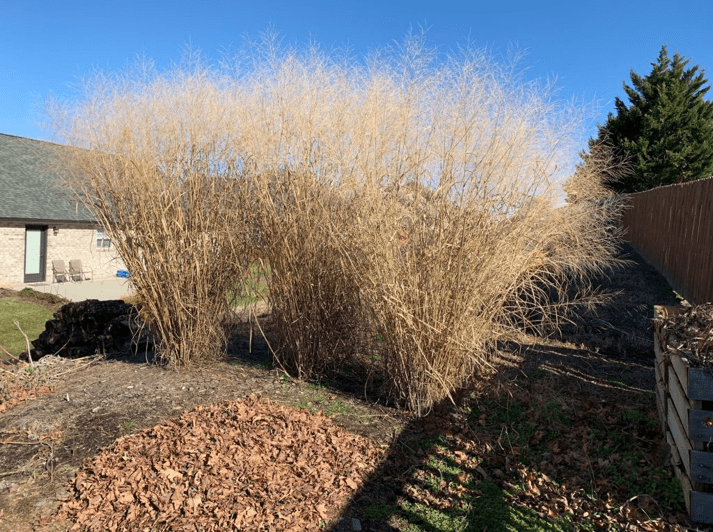The decay and collapse of perennials over the course of winter is an acquired visual taste, but once you become attuned to the cycle, it’s one of the most lovely and rewarding parts of gardening. In fact, many ornamental grasses and perennials are downright stunning once they get good and dead. Take “Cloud Nine” switchgrass, a native marvel that towers eight feet tall and pops right back up after a snow, or joe-pye weed, tall and eerie once its leaves wither and fall.
Many native plant gardeners leave echinacea, rudbeckia, and other perennials with seed heads standing all winter to provide cover and food for the birds. And that’s a good thing. But there’s another angle that’s easy to miss: the hollow stems of perennials such as joe-pye weed, goldenrod and monarda are where insects overwinter and lay their eggs. If you clean all your perennials up in the fall and dispose of the debris, you’re throwing away next year’s insect life – and bird food.
Instead, wait until late winter to remove dead perennial foliage, and keep an eye out for mud cells and other signs insects have used your plants to reproduce. If you can, pile the debris from hollow-stemmed plants in a place where insects can still emerge on cue when the time is right.
If you’re a tidy sort who freaks out about leaving dead things standing, my best advice is to put your tallest, craziest stuff in the backyard rather than out front, and keep the border between plants and lawn neat. The tension between manicured and wild elements makes a good look and will reassure your neighbors you haven’t gone over the edge.
(Theoretically. You’ll have to ask my super-neat neighbor what she thinks of my garden, especially after I import a dead tree as the focal point of my next flowerbed. That’s going to be a huge hit, I predict.)
Karin Beuerlein is a writer, gardener and backyard birdwatcher in Knoxville TN. Read her blog at https://www.knoxbirds.org/blog/

